Flamingos are unusual inhabitants of our planet; their warm pink color is mesmerizing. They have many peculiarities in behavior and lifestyle. 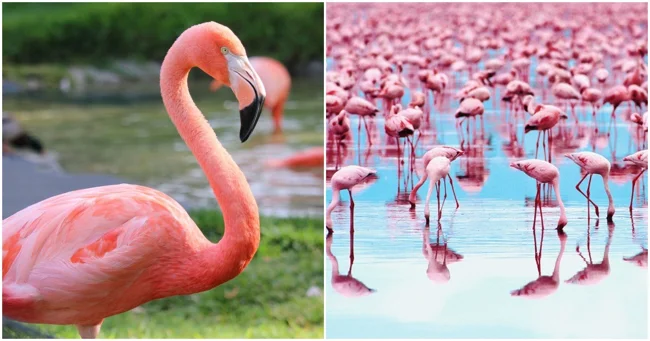
You've probably all seen photos (and some have seen them live) of these beautiful flocks of birds standing on one long leg and knee-deep in water. They have some fun features.
There are 6 types of flamingos 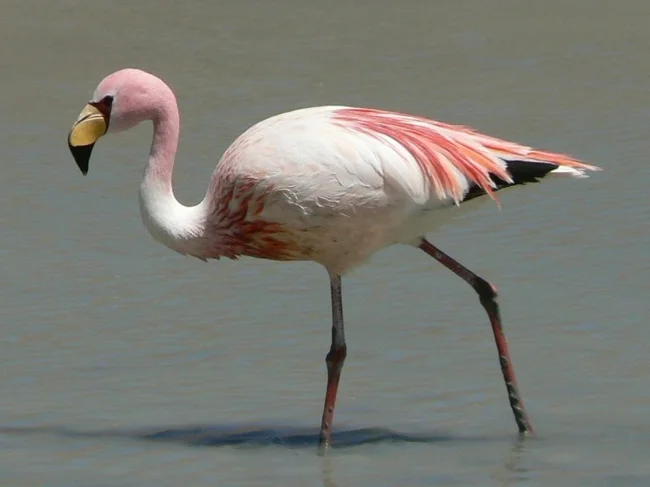
Flamingo James
Pink flamingos (Africa, southern Europe, southwestern Asia).
Lesser flamingos (Africa, northern part of the Indian subcontinent).
Chilean flamingos (Southwestern South America).
Caribbean flamingos (Caribbean, northern South America, Yucatan Peninsula, Galapagos Islands).
Andean flamingos (Chile, Peru, Argentina, Bolivia).
Flamingo James (Chile, Peru, Argentina, Bolivia).
Flamingos build nests from the ground 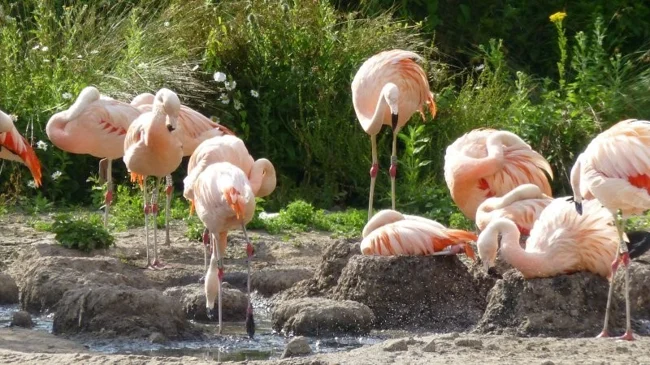
Flamingo nests look like miniature mud volcanoes that can hold one large egg. Both mom and dad build them together.
Flamingos are this color because they eat. 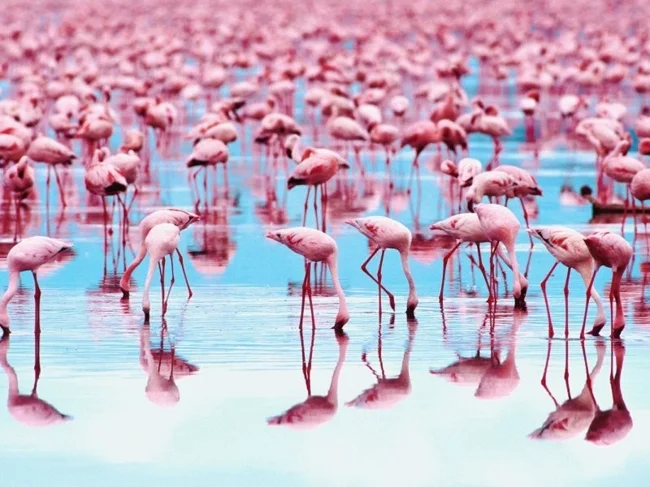
Flamingos get their unique pink color from carotenoids they get from microscopic algae when they feed on brine shrimp. When flamingos eat these algae and shrimp, their bodies metabolize the pigments that color their feathers pink.
The flamingo's knees are bent forward, not back. 
The limbs of flamingos, like those of humans, bend forward. What appears to be the back knee is actually the ankle joint. The bird's knees are higher and hidden by the body and feathers.
Some flamingos live in quite extreme conditions 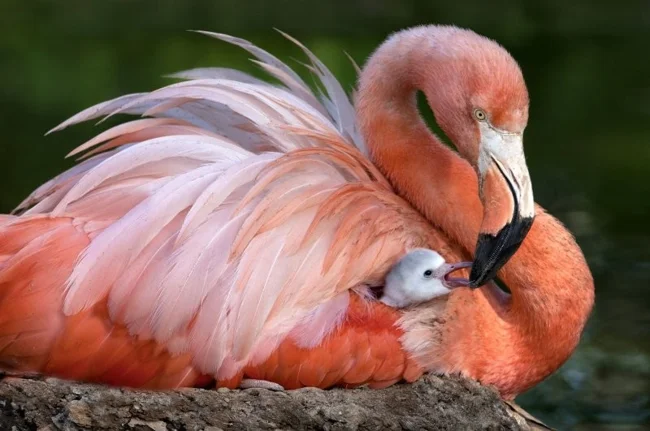
Flamingos typically live in shallow, brackish waters. However, some species breed and raise their young in very salty bodies of water. The concentration of carbonate salts in these lakes is so high that it can burn the skin, making the water unsuitable for most animals.
Able to sleep standing on one leg 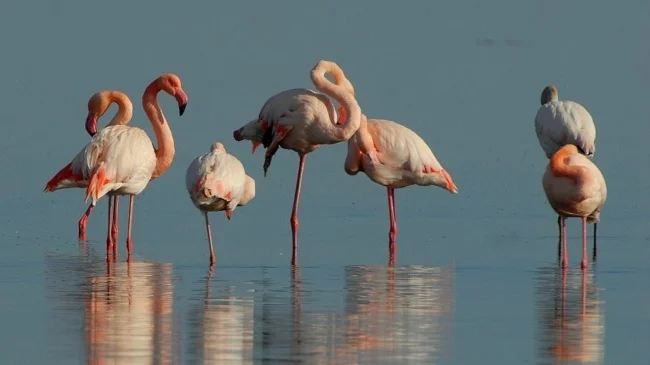
Flamingos can stand on one leg for a long time and even fall asleep in this position. According to research, this helps birds become less tired. In addition, some scientists believe that by standing on one leg, flamingos can keep the other leg warm under their belly. This position also helps them conserve heat that would normally be lost through their paws.
Flamingos produce milk for their chicks 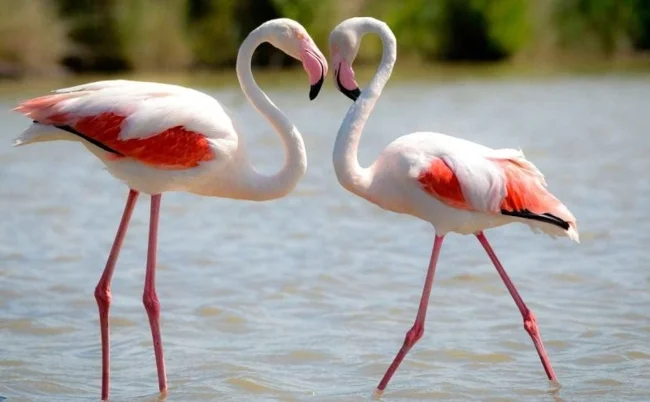
Flamingos produce milk in their throat and then expel it through their mouth. This liquid contains many healthy proteins and fats. Milk feeding can be carried out by both the female and the male, who feed their chicks until they learn to feed themselves.
Flamingos can fly 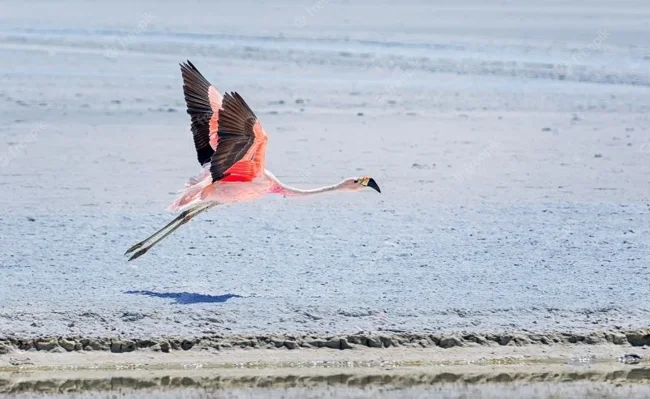
Flamingos are mostly seen in large flocks on the ground, but it turns out they can also fly. Some flamingos travel to breed, migrate to new bodies of water with changing seasons, or fly to warm mountain areas for the winter. If flamingos make long flights, they prefer to do it at night.
Flamingos feed, head down 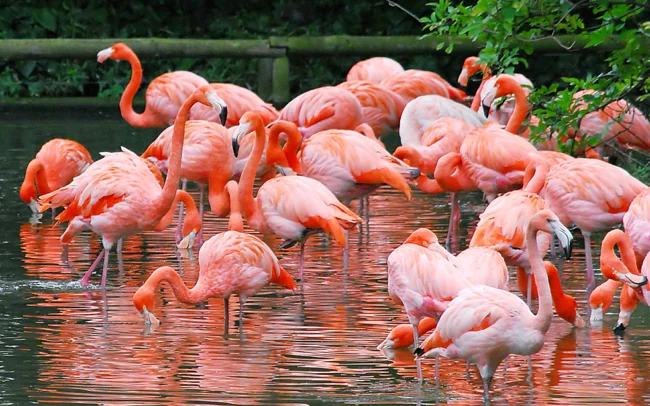
Flamingos feed on plants and organisms that live in shallow water areas. When it's time to eat, they lower their head into the water, pointing their beak towards their feet. Moving their beak from side to side, they use their tongue to fill the beak with water. The jagged edges of the beak serve as a filter through which water exits and food enters.
0 comments
